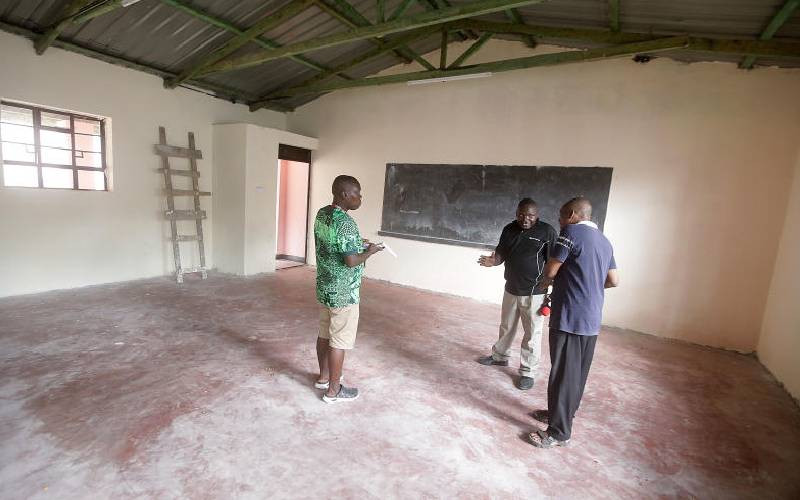By Kenan Miruka
During the World War II, former British Prime Minister Winston Churchill is quoted saying: "In war time, the truth is so precious that she should always be attended by a bodyguard of lies."
This statement underlies the significant role propaganda plays during times of war.
Common media for transmitting propaganda messages include news reports, government reports, junk science, books, movies, historical revision, television, posters, radio and recently social media networks like Twitter and Facebook.
In the 2001 American invasion of Afghanistan, propaganda was used to demoralise the Taliban and win the support of the Afghan population.
Commandos with aircraft were used to jam local radio transmissions and transmit replacement propaganda messages. Leaflets portraying Americans as friendly to Afghanistan and emphasising various negative aspects of the Taliban were dropped throughout the country.
Publish articles
The US used propaganda campaigns justifying to the American people the war in Iraq and in the same token used similar tactics to bring down Saddam Hussein’s reign.
The US paid Iraqis to publish articles in their newspapers written by American troops under the idea that the articles are unbiased and real accounts of the war and popular support by Iraqis.
America’s objective was to depose Saddam Hussein from power over allegations of possible weapons of mass destruction links to Osama bin Laden’s Al Qaeda terror group.
In Nazi Germany, propaganda was mostly produced by the Ministry of Public Enlightenment headed by Joseph Goebbels.
It is rated as the worst propaganda machinery, which led to the worst event in history, the Jewish holocaust.
Indoctrination
As Nazi propaganda radicalised, the German public were able to accept the mass persecution, deportation and extermination of Jews.
Goebbels was appointed by Hitler in 1933. All journalists, artists and writers had to register with the ministry’s branches before working for the press, music, film, literature, radio or fine arts.
Stay informed. Subscribe to our newsletter
Nazi leaders believed propaganda was a key tool in achieving their objectives. Hitler met with Goebbels daily to discuss the world news. After gathering Hitler’s thoughts, Goebbels would then cascade the information down the party line.
Broadcasters and journalists needed prior approval before their works were disseminated. Many books, films and posters were produced to spread Nazi beliefs.
The education system was doctored to indoctrinate German youth with anti-semitic ideology where racial theory was taught in schools.
Picture books for children such as The World of a Jew and Poisonous Mushroom were widely circulated in the late 1930’s.
They contained depictions of Jews as child molesters, devils and other morally decrepit figures. Slogans such as "Judas the Jew betrayed Jesus the German to the Jews" was recited in class.
In the Soviet republic, Joseph Stalin’s regime made the Tupolev ANT-20, the largest fixed wing aircraft specifically to spread propaganda.
It was equipped with a powerful radio set dubbed ‘Voice of the Sky’, radio stations, film projector with sound for showing movies in flight, a library, photo lab, leaflet dropping machinery and printers.
The aircraft could be disassembled and transported by railroad if needed to disseminate revolutionary and Marxist teachings.
In the Yugoslav war, propaganda was used to create hatred and fear and especially incite the Serb population against other ethnic groups like the Croats, Albanians and Bosnians.
Serb media went to great lengths to justify and deny mass war crimes committed by Serb forces against non-Serbs.
During World War I, false anti-German atrocity propaganda was utilised by the allied leaders to attain their goals such as bolstering the morale of the rank and file of the allied nations.
Gruesome accounts
In a bid to turn the Chinese who revere the dead against Germans, British Army intelligence chiefs came up with an anti-German propaganda.
The propaganda involved a detailed gruesome account of an alleged ‘corpse exploitation establishment’ operated behind the frontline by a German company.
Under the scheme, ‘evil Germans’ used corpses of their own fallen soldiers for the manufacture of soap.
According to the story, trains full of corpses arrived at a large factory where the bodies were attached to hooks and tied to a long chain.
An article in The Times, on April 17, 1917 reads: "The bodies are transported on this endless chain into a long, narrow compartment, where they pass through a bath which disinfects them. They then go through a drying chamber and finally are automatically carried into a digester or great cauldron, in which they are dropped by an apparatus, which detaches them from the chain. In the digester they remain for six to eight hours, and are treated by steam, which breaks them up while they are slowly stirred by the machinery."
Years after the war, some of these false atrocity stories were exposed putting to rest many legends.
Stories about ‘Nazi extermination camps’ and Hitler’s gas chambers are considered part of the propaganda used against Germans.
 The Standard Group Plc is a
multi-media organization with investments in media platforms spanning newspaper
print operations, television, radio broadcasting, digital and online services. The
Standard Group is recognized as a leading multi-media house in Kenya with a key
influence in matters of national and international interest.
The Standard Group Plc is a
multi-media organization with investments in media platforms spanning newspaper
print operations, television, radio broadcasting, digital and online services. The
Standard Group is recognized as a leading multi-media house in Kenya with a key
influence in matters of national and international interest.
 The Standard Group Plc is a
multi-media organization with investments in media platforms spanning newspaper
print operations, television, radio broadcasting, digital and online services. The
Standard Group is recognized as a leading multi-media house in Kenya with a key
influence in matters of national and international interest.
The Standard Group Plc is a
multi-media organization with investments in media platforms spanning newspaper
print operations, television, radio broadcasting, digital and online services. The
Standard Group is recognized as a leading multi-media house in Kenya with a key
influence in matters of national and international interest.








